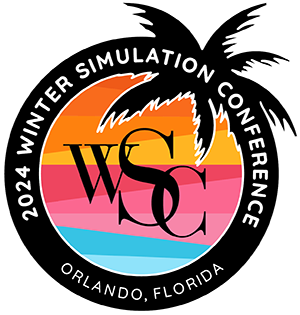Track Coordinators: Sara Shashaani (North Carolina State University), Zeyu Zheng (University of California, Berkeley)
The Poster Session offers a timely venue to present and discuss new modeling and simulation research through a forum encouraging graphical presentation, demonstration, and active engagement among Winter Simulation Conference (WSC) participants. We are seeking outstanding extended abstracts (2 pages) submissions to be presented in a poster format at the conference. Competitive contributions will present interesting recent results, novel ideas or works-in-progress that are not quite ready for a regular full-length paper. Contributions from Ph.D. students are particularly welcome. Submitted manuscripts should follow the standard template for WSC submission, and should not exceed the 2 pages limit. Extended abstract submissions are encouraged in all areas of modeling and simulation covered by WSC.
Extended abstracts are used for designing the tracks and are included in the proceedings distributed to conference attendees, but they are not included in the archival version of the proceedings in IEEE and ACM repositories.
Important Dates
- August 2, 2024: electronically submit 2-page extended abstracts
- September 2, 2024: Notification of acceptance to authors (including details about submitting slides, and formats of the posters)
- September 13, 2024: Final extended abstracts due
- November 15, 2024: Poster Madness Presentations due
- December 15, 2024: Poster Madness Presentations and Poster Session
Poster Preparation Guidelines
Each presenter in the Poster Session should bring a hard copy to WSC. The bulletin board measures 48″ tall x 96″ wide. We recommend a poster size of 36″ tall x 72″ wide however, other sizes are acceptable, if they do not exceed the bulletin board dimensions of 48” tall by 96” wide. The poster orientation should be done horizontally/landscape. Thumbtacks/pins will be used to hang the posters up on the board.
WSC has teamed up with the FedEx Office on-site at the Marriott World Center to make your poster ordering convenient. Click here to access the order form.
Your poster should cover the main points of your work and be as self-explanatory as possible. The posters will be available in the exhibition hall for the duration of the conference, in order to allow the presenters to discuss their work.
Suggested Best Practices
Maintain a good contrast between the background and foreground text. Avoid acronyms and extensive mathematical notations as much as possible. Include one or more of the following: a brief description of the problem, objectives of the work, the methodology utilized, conclusions, relevant diagrams, and graphs and charts, in order to present an overview of the application. Organize your poster into sections, e.g., Introduction, Methods, Results, Discussion, Conclusions, and Literature Cited. (Avoid using too many citations.) You may wish to use numbers to help sequence sections of the poster. Arrange the material into columns. The title should be readable from 15–20 feet (approximately 4.5–6 meters) away. The text should be large enough to be read easily from at least 6 feet (approximately 2 meters) away. The poster should not rely upon your verbal explanation to link together the various portions. Avoid densely packed, high word-count posters. Posters with 800 words or less are ideal. Self-explanatory graphics should dominate the poster. Below are web pages that provide more guidelines and free poster templates:
- http://people.eku.edu/ritchisong/posterpres.html
- http://www.swarthmore.edu/NatSci/cpurrin1/posteradvice.htm
- http://www.posterpresentations.com/html/free_poster_templates.html
- https://www.spoonflower.com/presentation-posters
- https://docstore.fedex.com/hco5629
Poster Madness Slide Preparation Guidelines
Each presenter will have a maximum of 2 minutes and up to 4 slides (including a title slide) to present their work. Please submit slides in PowerPoint format (.pptx).
